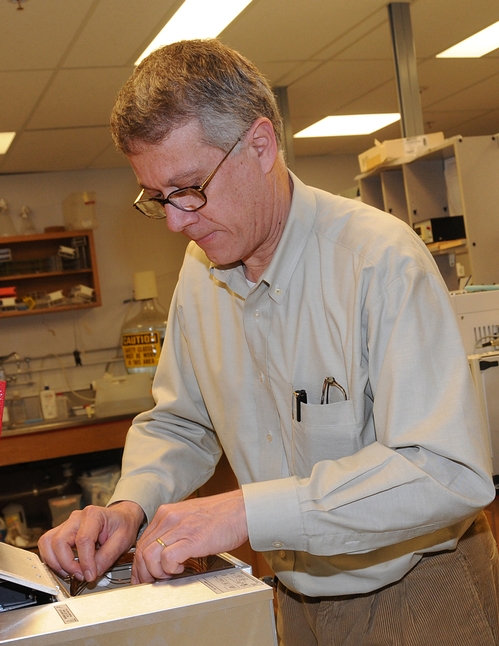It's a killer, pure and simple.
But the issue is as complex as it comes.
The malaria mosquito, from the genus Anopheles, infects some 350 to 500 million people a year, killing more than a million. Most are young children in sub-Saharan Africa.
Female mosquitoes “bite” because they require a blood meal to develop their eggs. They detect their prey via olfactory receptor neurons found on their antennae, the insect equivalent to the human “nose.”
When Anopheline mosquitoes are infected with a parasite that causes malaria, the insect-host transmission occurs. The result: a deadly killer.
Identifying exactly how malaria mosquitoes detect their human prey is crucial to developing strategies for mosquito control, says chemical ecologist Walter Leal, professor of entomology at the University of California, Davis.
Leal, recently asked to write a "News-and-Views" piece on a Yale-Vanderbilt study for the international science journal, Nature, did so eloquently in its March 4th edition. He praised the scientific report as a “milestone discovery in our understanding of the malaria mosquito’s sense of smell.”
In the article, headlined "The Treacherous Scent of a Human," Leal zeroes in the widespread threat of malaria, a disease that threatens half of the world’s population. It's "an accessory to the deaths of about one million humans every year,” Leal wrote. “Globally, the number of people who get malaria each year is greater than the population of the United States.”That's putting a number on the numbers.
The Yale-Vanderbilt team, headed by John Carlson of the Yale Department of Molecular, Cellular and Developmental Biology, examined 79 of the malaria mosquito’s odorant receptors, finding that some are well-tuned to detect specific human odors and others aren’t. Certain odorants activate some receptors but inhibit others, according to their comprehensive study published March 4 in Nature.
Indeed. The Leal lab back in 2008 published groundbreaking research that revealed the secret mode of the insect repellent, DEET. The scent doesn't jam the insect senses and it doesn't mask the smell of the host, as scientists previously thought. Mosquitoes avoid it because it smells bad to them.
Leal advocates more molecular studies in the war against malaria and other mosquito-borne diseases. But that research can't stand alone. As he succinctly points out: “The development of effective malaria control will require a multidisciplinary approach that includes, but is not limited to, improvements to social infrastructure in countries affected by disease, vaccination programs and vector management.”
New mosquito attractants or repellents, he says, could be developed through reverse chemical ecology, determining which odorant attracts and which repels.Mosquitoes don't like the scent of DEET. What else do they NOT like?
The study, as Leal correctly observes, "offers a fresh strategy for controlling the unwitting accessories to one of the world’s most prolific killers.”
Attached Images:

Walter Leal in lab

Killer